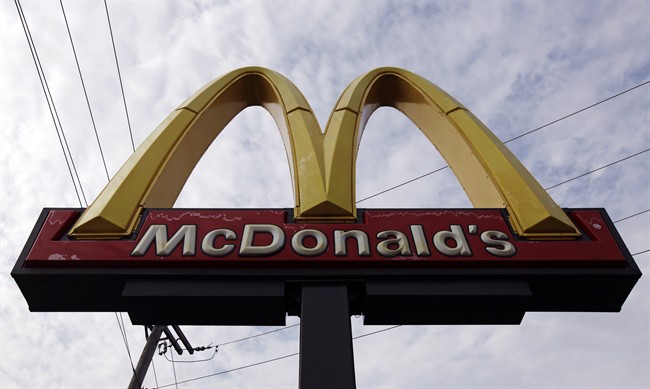It might just be the beginning of the end for fast food as we know it.

McDonald’s, the world’s largest burger chain, said Friday sales at U.S. restaurants fell another 1.7 per cent in the latest three month stretch, furthering an emerging trend in North America of declining traffic at it and other fast-food restaurants.
While Illinois-based McDonald’s doesn’t break out Canadian numbers, global sales were also down just under one per cent compared to the same period last year, the chain said, “reflecting negative guest traffic.”
In Canada, falling customer traffic is affecting McDonald’s and other traditional fast food players, as well, experts say.
McDonald’s is the second biggest fast food chain in Canada with about 1,400 restaurants. At about 3,600 locations, Tim Hortons ranks at No.1.
“McDonald’s is kind of the bellwether in the market place, you’ve got Tims but McDonald’s is number two,” Carter said.
MORE: What Canadians want to know about what’s in fast food meals
Part of the reason for falling traffic levels: better informed about healthier food choices, like dining in, consumers aren’t visiting so-called quick-service restaurants as much. About 45 per cent of Canadians still buy at least one item from a fast-food restaurant every day, NPD research shows. But there’s been a steady “erosion” of that rate in recent years, according to Carter.
Canadian customers are also continuing to “shift away” from menu items considered less healthy, he said, and toward “products that are perceived to be skewing toward health and wellness overall.”
Fast casual
Another factor denting sales at traditional fast-food chains has been the rise of “fast casual” restaurants.
Fast casual burger chains like Hero Certified Burger and Five Guys have sprouted up in Canada in recent years to steal customers. They’ve been joined by others, like Chipotle Mexican Grill and Panera Bread from the United States, where the shift towards fast casual in further ahead.
Message and menu shift
To close the perceived quality gap, McDonald’s has launched an information campaign called “Our Food. Your Questions” in Canada about how its food is made.
Flyers mailed to homes include “facts about our sourcing practices and/or ingredients,” a Canadian spokesperson said in an email message. “Our transparency and marketing efforts will continue to merge in 2015.”
The Canadian chain is also pushing out the message on digital media platforms. “We will continue raising awareness of ‘Our Food. You Questions’ through online and traditional media, and we will be launching more videos in the coming months that debunk prominent myths about our food,” spokesperson Gema Rayo said.
McDonald’s will also continue to try out different menu items with healthier ingredients, Rayo said. New ingredients that will be found on the Canadian menu will include baby kale, whole grains and four vegetables servings per entrée salad, for example.
“We will re-launch our salad offerings to cater to evolving Canadian consumer preferences,” she said. “Our menu will continue to provide balanced options to meet our costumers dietary needs and wants.”
–with files from Carmen Chai, Global News
jamie.sturgeon@globalnews.ca
Follow @jasturgeon
carmen.chai@globalnews.ca
Follow @Carmen_Chai




Comments